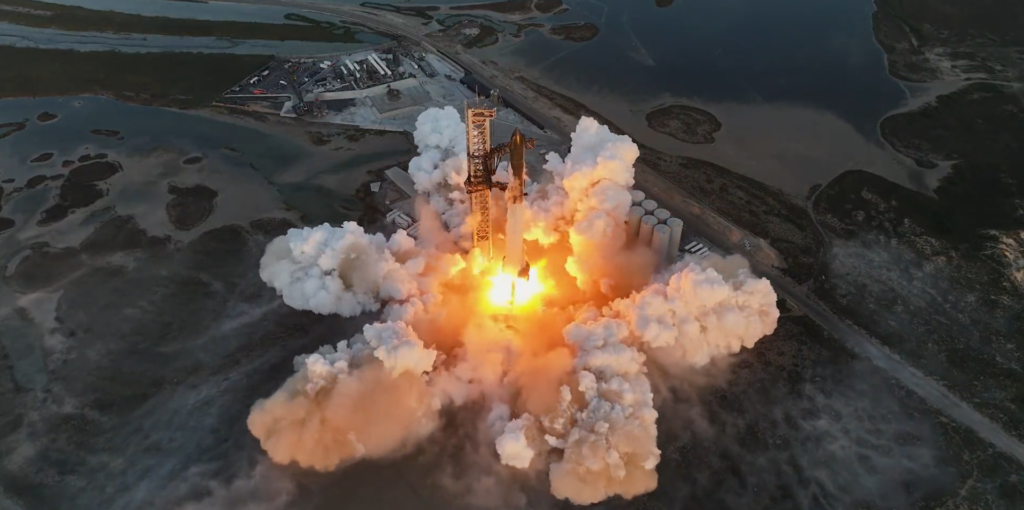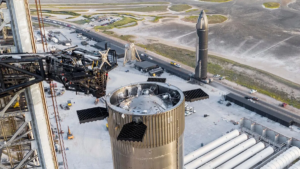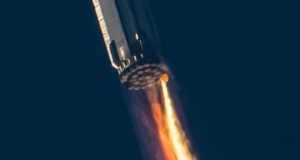
How Long Before SpaceX’s Next Starship Launch?
Between the first full Starship flight back in April, and the second test just days ago, it took SpaceX around 7 months of time to prepare. This included a host of testing, pad repairs, infrastructure updates, and of course FAA approval. In reality, this was a decent bit longer than the company had hoped as hardware was ready to launch long before the second flight was approved.
With the completion of IFT-2, the question now becomes how long before SpaceX can be back on the pad and ready for a third flight. Recent comments from the company suggest that hardware could be ready to launch in around 1 month. However, that doesn’t include very important factors like approval and any possible roadblocks. Here I will go more in-depth into Starship’s next launch, what the company needs to complete, possible complications, and more.
Next Launch Timeline

By now, SpaceX is already back at the launch site looking over Stage 0 and how well it held up. In addition, they are also continuing to work on the next set of prototypes that will eventually attempt to launch. In regard to this, two days ago Elon Musk tweeted saying, “Starship Flight 3 hardware should be ready to fly in 3 to 4 weeks. There are three ships in final production in the high bay (as can be seen from the highway).” While exciting, there are a few important things to consider with this tweet in mind. For one, Musk is known to have very ambitious timeline estimates that often take a bit longer than expected. After the first Starship launch, he said that they would be ready to launch in 1-2 months. Obviously, this took quite a bit longer.
In addition, this tweet is specifically talking about when hardware should be ready to fly, not when SpaceX will be approved and on the pad for a third flight. The difference is that FAA approval just like on the last attempt, will be the main limiting factor as far as time before SpaceX can attempt another launch. This being said, there are some significant differences this time around that should speed this approval process up. For one, there was no large pad failure and debris shot hundreds of meters in every direction. Recent close-ups and comments from Musk highlight that the pad is in great shape and basically ready to resume testing and another launch.
After the first flight, the pad failure created quite a bit of controversy and concern. Combine this with the added physical work needed to repair the pad, add a new water-cooled steel plate, etc, and it was going to take some time. This time, that entire section should be checked off. To add to this, the last months leading up to the second launch’s approval were all about the water deluge system which the Fish & Wildlife Service was investigating. That is a complete process by now and something that specific agency isn’t likely to get involved with again.
The other important factor influencing the time the FAA takes to approve the launch, is how well the second flight went. Arguably most importantly, other than the initial aspects of the flight going perfectly, the flight termination system worked exactly as intended. This is a big deal when you’re talking FAA approval as that system is specifically designed for safety purposes. Also, the first flight had some delays with this hardware which showcases the improvements made between the two launches. This should give the FAA some confidence and help the approval process knowing SpaceX efficiently and safely destroyed both vehicles when necessary.
Lastly, because of the difference in the outcome of the mission, the checkoff list should be tiny in comparison to the first flight. Before the second flight, the FAA opened a Starship mishap investigation and cited 63 corrective actions the company needed to take before the next Starship launch could be approved. This list included a host of changes such as booster leak mitigation, Raptor leak mitigation, booster reliability improvement, safety system, and pad design/process. The first launch of Starship no doubt had quite a few problems, which influenced the amount of repairs and changes necessary. This second flight however managed to reach space and have practically a perfect first stage flight until shortly after stage sepeartion. In other words, there simply are fewer problems and fixes needed between this flight and the next one.
All of these differences support a faster approval process and a third flight not long from now. While some are ambitious about a late December launch date, a much more realistic timeline would place a third flight somewhere in the first quarter of 2024. However, if SpaceX moves fast along with the FAA, a launch in just a few months is well within reach.
Important Differences

Earlier today, SpaceX updated its website with a short overview of Starship’s second integrated flight test. Here they were quoted saying, “Starship’s six second stage Raptor engines all started successfully and powered the vehicle to an altitude of ~150 km and a velocity of ~24,000 km/h, becoming the first Starship to reach outer space and nearly completing its full-duration burn.” They went on to say that the flight test’s conclusion came when telemetry was lost near the end of second stage burn prior to engine cutoff after more than eight minutes of flight. The team verified a safe command destruct was appropriately triggered based on available vehicle performance data. The water-cooled flame deflector and other pad upgrades performed as expected, requiring minimal post-launch work to be ready for upcoming vehicle tests and the next integrated flight test” they said.
These comments highlight some of the advancements made and improvements from the last flight. Within just a few weeks we can expect to see some booster and ship prototypes returning to the pad to begin pressure testing and static fires. The next booster prototype that is practically complete is Booster 10. While improved from Booster 9, there really aren’t a massive number of differences and upgrades. This also plays a valuable role in the time between now and a third flight.
For example, the first full Starship flight used Booster 7 and Ship 24. This combo was an early prototype and something that SpaceX knew was not the most capable. To put it in perspective, before the first Starship launch, Elon said, “The funny thing is we are actually dying to get this rocket off no matter what happens to it because there are so many improvements between booster 7 and booster 9, literally hundreds. We moved from hydraulic thrust vector control to electric, the entire heat shield structure is completely redesigned and more” he said. All of these upgrades meant a lot more time was spent working with this new hardware and components before the second flight. Whether that meant additional testing or general work, it added to the timeline.
For this upcoming mission, SpaceX should have a booster that is nearly identical to Booster 9, which just lifted off. They proved that the booster can do its primary function which is to propel the upper stage and eventually disconnect. The similarity between this hardware only simplifies the entire process and should mean the next booster prototypes get on the pad faster.
SpaceX also was recently quoted saying, “With a test like this, success comes from what we learn, and this flight test will help us improve Starship’s reliability as SpaceX seeks to make life multiplanetary. Data review is ongoing as we look for improvements to make for the next flight. The team at Starbase is already working final preparations on the vehicles slated for use in Starship’s third flight test, with Ship and Booster static fires coming up next” they said. While the flight was by no means perfect, it was an improvement which only supports a quicker turnaround before the next launch.
In the grand scheme of things, SpaceX is currently approved to launch a maximum of 5 full stack Starship flights a year. As these missions start to improve, the possibility of this becoming a limiting factor also increases. It’s possible that sometime in the near future, SpaceX will begin working with the FAA to try and increase this limit to ensure they stay on schedule and continue to progress.
On the second flight, Starship executed a successful hot-stage separation, powering down all but three of Super Heavy’s Raptor engines and successfully igniting the six second stage Raptor engines before separating the vehicles. This was the first time this technique has been done successfully with a vehicle of this size. Following separation, the Super Heavy booster completed its flip maneuver and initiated the boostback burn before it experienced a rud. SpaceX clarified that the vehicle breakup occurred more than three and a half minutes into the flight at an altitude of ~90 km over the Gulf of Mexico. With this mission complete, SpaceX now has a decent bit of work to do as they prepare for a third mission. With multiple prototypes just about ready to fly, the goal is to keep launching, gathering data, and launching again until they perfect the process. Something we can look forward to seeing more of in the near future.
Conclusion
SpaceX could manage to be on the pad ready for a third Starship flight in only a few months. Late January to mid-February is a plausible launch timeframe as so much work is already completed. This includes both physical progress and work on the approval side with the FAA. We will have to wait and see how it progresses and the impact it has on the space industry.



